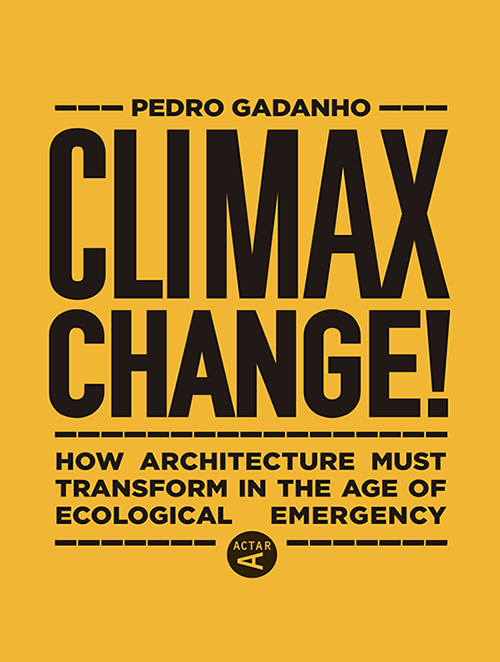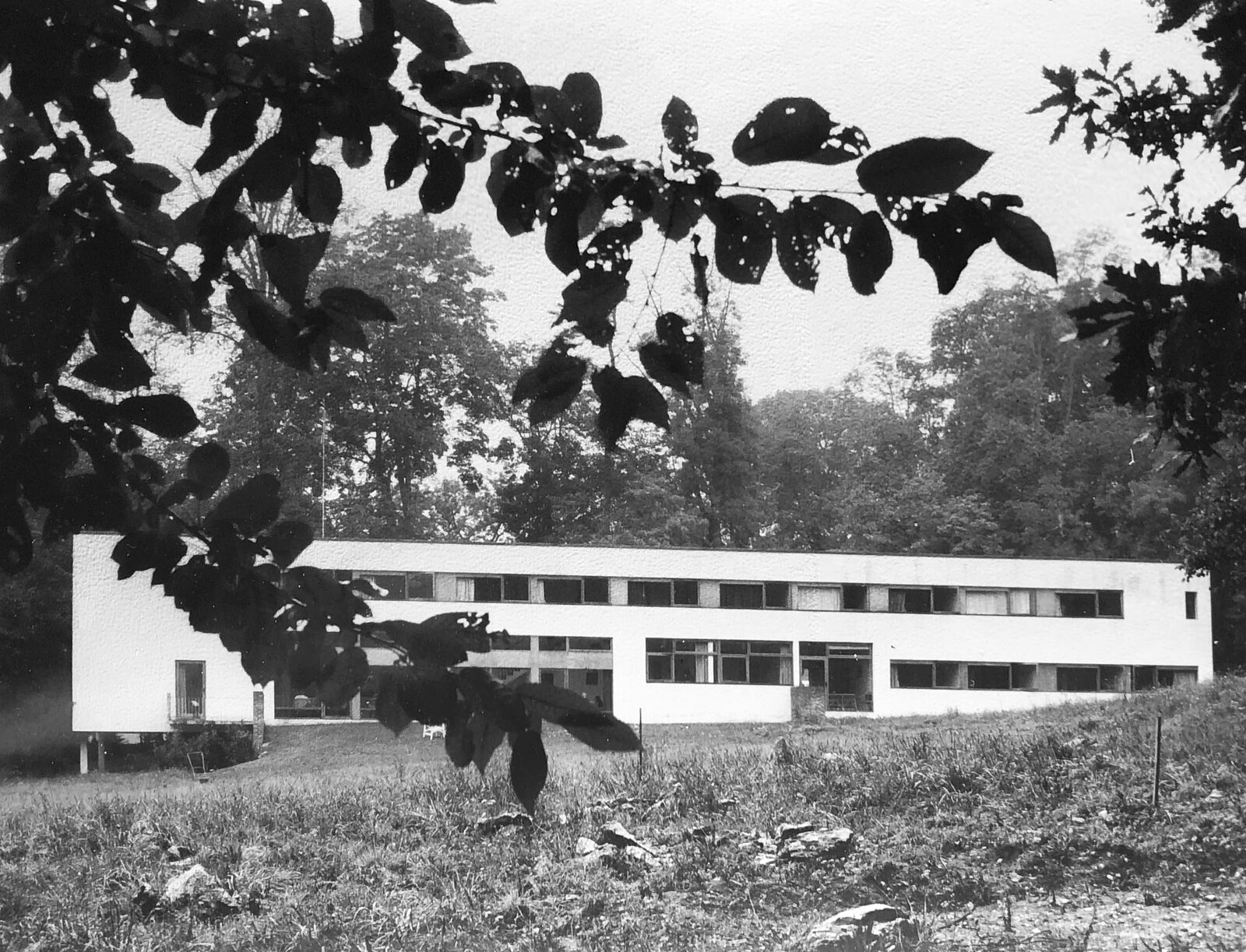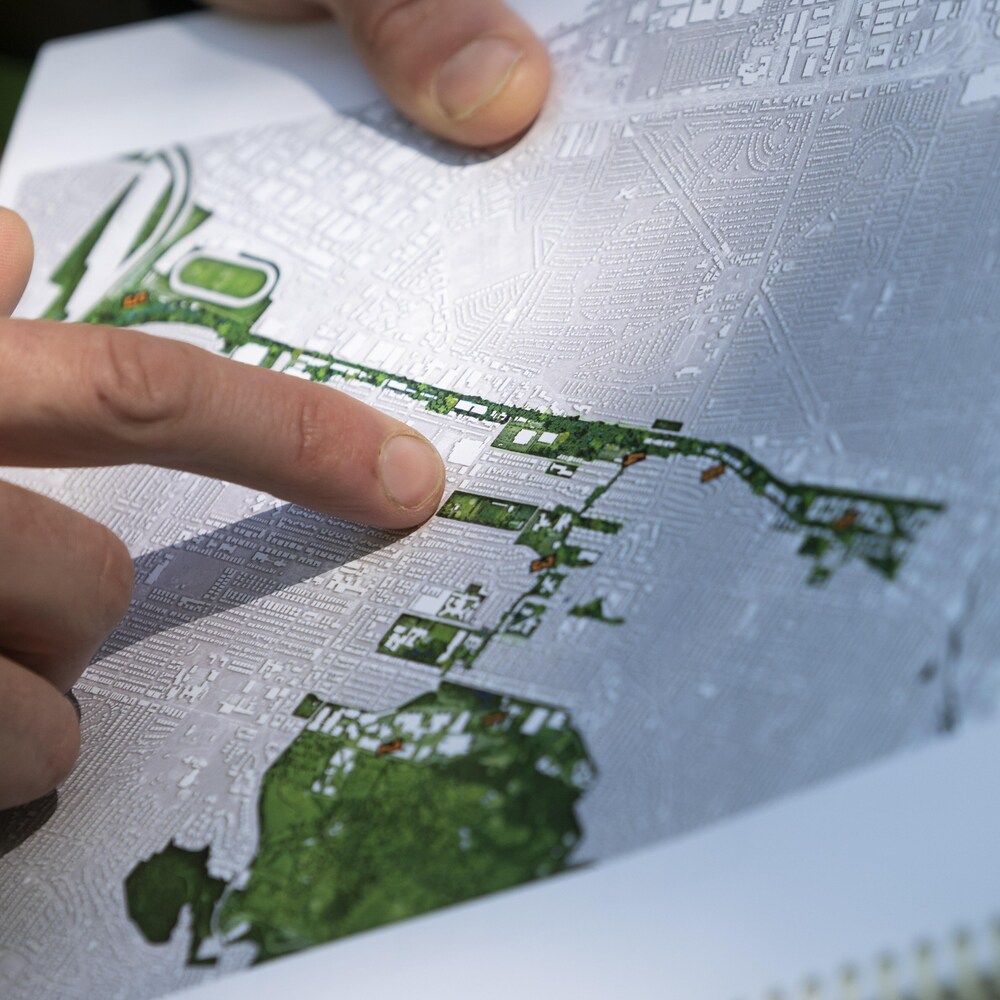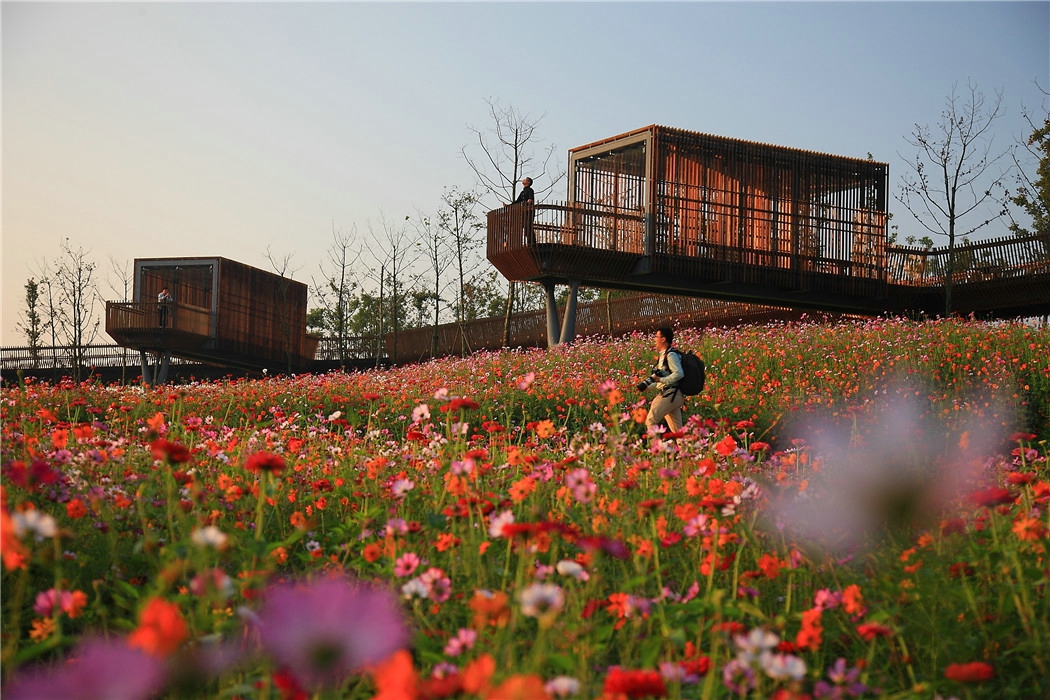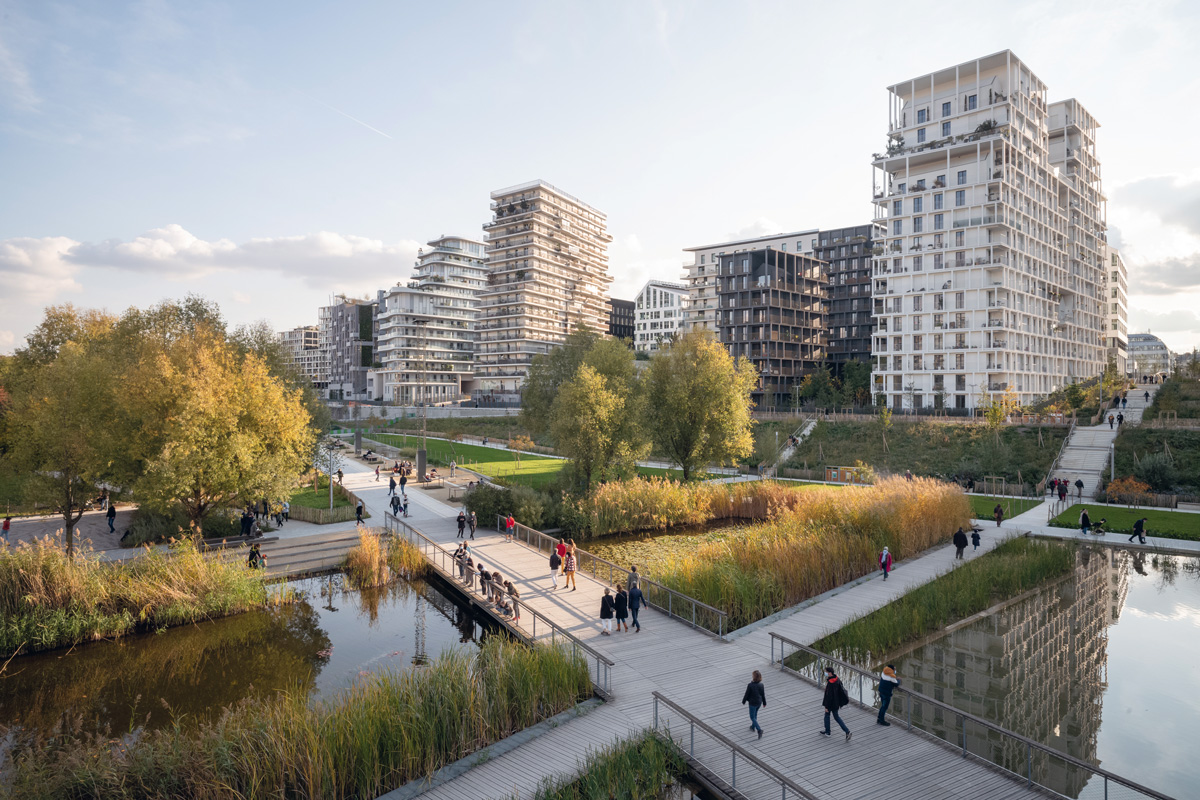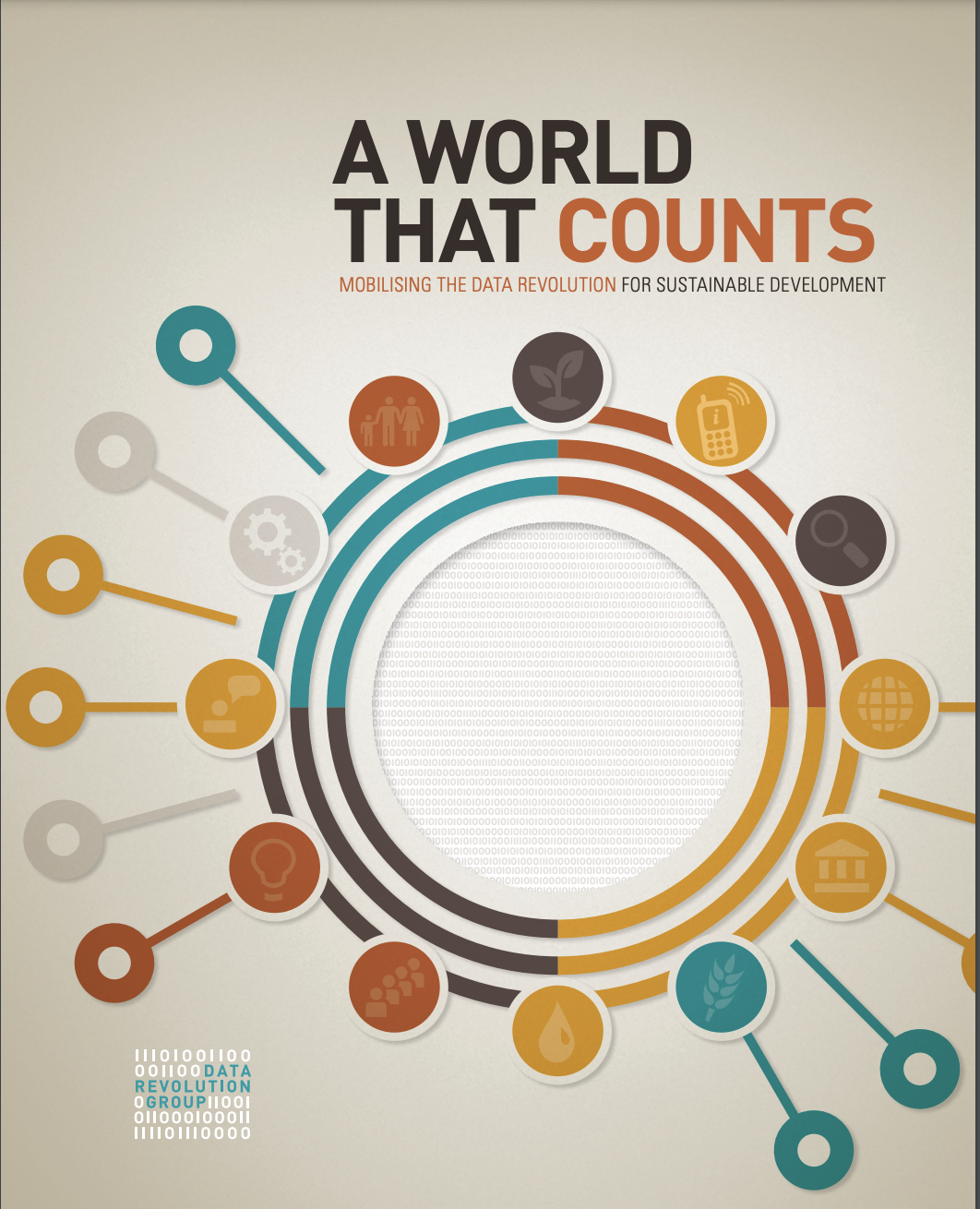|
Organization and Decision, Niklas Luhmann, Springer: 2011. Organizations deserve more attention than they have hitherto found – above all, a different sort of attention. . . to concentrate our attention more strongly not on organizations as countable entities but on organization as a process. . . .a different understanding of organization could prove important for the purposes of practical policy. . . organizations . . .have become crucial, indispensable to modern life, it could be important to have a better grasp of their “intrinsic logic.” . . .it could be important to give organizations a conception of themselves that enables them to answer for themselves. There is much talk of decentralization; more flexibility is demanded – for instance in regulating working time or flattening hierarchies, or in eliminating what is superfluous. But fashions in the slogans bandied about by the consulting industry are perhaps also among the external factors that ignore the question. . .of whether the individual organization is not best able to find out on its own how best to cope. Where “participation” is practiced, the term is no longer used to express the pathos of becoming human or treating human beings as human beings; it addresses how to obtain the best possible results. . .But this still leaves unsettled the question of how an organization determines what it can do in the light of such dependence – in other words, how it can build freedoms, alternatives, leeway into its dependence on its environment and into its dependence on its own past.
Toward Re-Entanglement: A Charter for the City and the Earth, Bauhaus Earth, Jun. 8, 2022. Toward Re-Entanglement: A Charter for the City and the Earth is a global call to action for the healthy and regenerative re-connection of human activity with the Earth’s natural systems. The history of human-kind has seen the accelerating urbanization of the globe, propagating the relentless extraction of planetary resources. The ecological and social impacts of conventional construction methods have been, are, and will be devastating – only a complete systemic overhaul of the built environment will prevent a global climate catastrophe. By switching to regenerative design and bio-based materials, cities can act as carbon sinks and create equitable development opportunities. This transformation must happen now.
Climax Change! How architecture must transform in the age of ecological emergency, Pedro Gadanho, Actar, 2022. In need of a paradigm shift similar to that of the Modern Movement, architecture desperately requires clear guidelines and targets so as to operate its inevitable transformation towards an ecologically-friendly design logic. From historical analyses of ecocide or the environmental avant-gardes, to topics such as decarbonization, degrowth, the Great Transition and the aspirations of Green New Deals, this book features ten essays around today’s climate change debates, bringing them home to architectural thinking. The Elephant in the Courtroom, Lawrence Wright, New Yorker, Mar. 31, 2022. [T]he case before New York Supreme Court Justice Alison Y. Tuitt—Nonhuman Rights Project v. James Breheny, et al.—was extraordinary. The subject of the petition was Happy, an Asian elephant in the Bronx Zoo. American law treats all animals as “things”—the same category as rocks or roller skates. However, if the Justice granted the habeas petition to move Happy from the zoo to a sanctuary, in the eyes of the law she would be a person. She would have rights. Drafting the Inhuman: Conjectures on Capitalism and Organic Necrocracy, Reza Negarestani. In Levi R. Bryant, Nick Srnicek & Graham Harman (eds.), The Speculative Turn: Continental Materialism and Realism, 2011. With the burgeoning popularity of speculative thought, it is becoming more evident that what is labelled as ‘speculative’ is more an epiphenomenon of the inquisitive renegotiation of human faculties, their limits and vulnerabilities rather, than a counterintuitive foray into the abyssal vistas unlocked by contemporary science. Accordingly, in the more extreme forms of speculative thought, political intervention and political analysis have been curtailed or at least have been temporarily suspended. This is because the horizon of agency (of emancipation or intervention), ontological privileges and conditions of experience are precisely those ingredients of political thought which are under the process of critical interrogation. Yet strangely, it seems that speculative thought has not given up remarking on capitalism—this hypothetical mathesis universalis of politico-economic problems—even in some of its most apolitical moments.2 For the purpose of understanding some of the disjunctive impasses between speculative thought and politics as well as possibilities for mobilizing a politics capable of using the resources of speculative thought, this essay will concentrate its energy on the most recurring politico-economic figure of speculative thought: Capitalism.
Amoia Cody Architecture illustrates Green Density zoning provisions for NYC, StirWorld, Apr. 9, 2022. The fabric of New York City continues to be reconstructed in a relentless cycle of urban development. After a brief pause during the early stages of the COVID-19 pandemic, construction spending is predicted by the New York Building Congress to reach a total of USD 174.1 billion between 2021–2023, making this one of the most extravagant periods in the city’s history. Concurrent with this boom is an ever-increasing anxiety over the future of the climate and global society. In 2021, UNEP (United Nations Environment Programme) sponsored multiple reports that urged policymakers to adapt standards to the intensifying impact of climate change; despite daunting projections of rising sea levels, newly constructed developments in NYC display few initiatives that substantially deviate from typical urban models. However, by re-evaluating the narratives implicit within the NYC Zoning Resolution, New York City’s ongoing development could provide opportunities to improve its relationship with climate and quality of life.
Care Beyond Biopolitics, Meredith TenHoor, E-Flux Architecture, May 2022. What would it mean to design buildings that exceed the economic accountings of liberal biopolitics, that instead offer an entirely different rationale for supporting health? In the years that Michel Foucault conceptualized the term biopolitics, he was part of a constellation of researchers and architects who developed care praxes that defined the value of life and its maintenance through a desire-based calculus. The welfare state institutions of architect Nicole Sonolet in particular—mental hospitals, public housing complexes, and new village typologies built mainly in postwar France and postcolonial Algeria from the 1950s to the 1980s—were designed not only to support, but to center the needs of people often excluded from design processes. Sonolet’s mental health centers for residents of Paris’s 13th arrondissement in particular were key projects for discovering a design practice tied to the provision of care for its own sake.
Le corridor écologique Darlington, un rêve qui devient la réalité, Radio Canada, May 31, 2022. Le corridor écologique Darlington est né d’un rêve : celui d’Alexandre Beaudoin, conseiller en développement durable à l’Université de Montréal, de ramener les renards sur le mont Royal. Depuis une dizaine d’années, il se consacre à ce projet qui, petit à petit, au gré des rencontres et du financement, a pris son envol.
Nature, Man, and Spirits as One is the philosophy underlying all of Turenscape’s designs. Tu-Ren is two characters in Chinese. Tu means dirt, earth, or the land while Ren means people, the man or human being. Once these two characters come together, Turen, it means earth man, a relationship between land and people. The firm’s philosophy is to create the harmony between land and people and to create sustainable environments for the future. Buen vivir: the social philosophy inspiring movements in South America, The Guardian, Feb. 4, 2013. Rooted in the cosmovisión (or worldview) of the Quechua peoples of the Andes, sumak kawsay – or buen vivir, to give it its Spanish name – describes a way of doing things that is community-centric, ecologically-balanced and culturally-sensitive. A far cry from the market-is-king model of capitalism, it inspired the recently revised Ecuadorian constitution, which now reads: “We … hereby decide to build a new form of public coexistence, in diversity and in harmony with nature, to achieve the good way of living. In English, buen vivir loosely translates “good living” or “well living”, although neither term sits well with Eduardo Gudynas, a leading scholar on the subject. Both sit too close to western notions of wellbeing or welfare, he says: “These are not equivalents at all. With buen vivir, the subject of wellbeing is not [about the] individual, but the individual in the social context of their community and in a unique environmental situation.”
Prometheus Materials uses algae-based cement to make masonry blocks , Dezeen, Jun. 7, 2022. Colorado-based Prometheus Materials has developed masonry blocks from a low-carbon cement-like material grown from micro-algae.The blocks, which meet the American Society for Testing and Materials (ASTM) standards, were made using an organic cement-like material grown in bioreactors that reproduces itself in ways similar to coral.
COOKFOX and Buro Happold design living facade for the birds and the bees, The Architect’s Newspaper, May 25, 2022. Through work on process and pattern studies, Lapp and Parnther arrived at a modular system of slip cast pods. Parnther noted that shapes resembling coral reefs and rocks had become popular in biophilic design, and for this project, they wanted something sculptural that could still accommodate birds, bees, and plants. Needing to find a way to attach a vessel for the fauna and flora to a screen wall, and wanting to keep the system modular for adaptability, they got to work on refining the pod design.
The Adams administration promises it will make improvements in New York’s built environment—only it isn’t ready to talk about any of it, The Architect’s Newspaper, Stephen Zacks, Jun. 2, 2022. Judging by the halting responses of various press offices within the newly formed mayoral administration of Eric Adams to a basic question about its infrastructure priorities, I fully expect that in a matter of weeks New York City will collapse into a pile of fiery debris: Its bridges will fail; its subways will be permanently inundated by stormwater; and its residents, having taken to homemade rafts, will begin scavenging for food, water, and shelter.
Quelle Ville Demain/ Tomorrow’s Cities, L’Architecture d’Aujourd’hui, Apr. 2022. La ville de demain » est sur toutes les lèvres, de toutes les stratégies : politiques, urbaines, architecturales, environnementales. Densification, mixité, intégration du vivant, mais aussi smart city, ville des 15 minutes, ou encore urbanisme transitoire, trames vertes, piétonisation et, toujours, planification. Les vocables ne manquent pas pour qualifier les stratégies d’urbanisation et de réhabilitation urbaine. La pandémie, et son corollaire, le confinement, ont rendu plus urgente encore la nécessité de penser la ville pour créer des lieux plus urbains, c’est-à-dire plus accueillants. Panser la ville donc… The “city of tomorrow” is on everyone’s lips, in every strategy: political, urban, architectural, environmental. Densification, mixed use, integration of living things, but also smart cities, 15-minute cities, transitional urbanism, greenways, pedestrianization and, always, planning. There is no shortage of terms to describe urbanization and urban rehabilitation strategies. The pandemic, and its corollary, containment, have made it even more urgent to think about the city in order to create more urban, that is to say, more welcoming places. So, dressing the city… Solange, Things I Imagined/ Down with the Clique, 2019.
|
Next System Project, “Toward a Caring Economy,” Jun. 7, 2016
Our political-economic system is not working: families are struggling, the middle class is diminishing, one in five U.S. children lives in poverty, we have unacceptably high rates of homelessness and incarceration, rising underemployment, collapsing environmental systems, and a host of other problems. What would it look like if the system in all of its dimensions – cultural, economic, political, environmental – focused on ensuring we have a healthy society and planet? What would it take so caring for people and nature is a top priority? Does the current shift to an age when automation replaces more and more jobs offer an opportunity to build such an economic system? How can we get there, and how can we measure our progress along the way? In this webinar, our panel of leading thinkers and practitioners weighing in on these questions includes: President of the Center for Partnership Studies and Director of the Caring Economy Campaign, Riane Eisler; Director of the National Domestic Workers Alliance and Co-director of the Caring Across Generations campaign, Ai-jen Poo; Co-Chair of the Next System Project, Gar Alperovitz; and Co-Director of the Global Development and Environment Institute (GDAE) at Tufts University and Core Support proponent, Neva Goodwin. Our partner Laura Flanders of GRITtv moderates the discussion.
ELINOR OSTROM, Nobel Prize in Economics Lecture, 2010.
Elinor Ostrom’s 8 rules for managing the commons
JEREMY WILLIAMS, January 15, 2018
The commons are those things that we all own together, that are neither privately owned, nor managed by the government on our behalf. Some are large scale and somewhat abstract, such as the English language. Others are local and more tangible, such as fishing rights, and they need more careful management. Our current political paradigm is sceptical of the commons: if nobody takes responsibility for something, it will inevitably be abused. So either it needs to be in private hands, or run by public institutions.
There are good examples of commons though – irrigation networks or pastures that have been managed by and for ordinary people for generations, and they’re still functioning. There are also examples of wrecked pastures and over-exploited fishing grounds, failed commons where a resource was mismanaged and destroyed. Elinor Ostrom studied both kinds, and drew up a list of principles for running the commons. I read them recently in Derek Wall’s book on her work, and they’re worth sharing.
1. Commons need to have clearly defined boundaries. In particular, who is entitled to access to what? Unless there’s a specified community of benefit, it becomes a free for all, and that’s not how commons work.
2. Rules should fit local circumstances. There is no one-size-fits-all approach to common resource management. Rules should be dictated by local people and local ecological needs.
3. Participatory decision-making is vital. There are all kinds of ways to make it happen, but people will be more likely to follow the rules if they had a hand in writing them. Involve as many people as possible in decision-making.
4. Commons must be monitored. Once rules have been set, communities need a way of checking that people are keeping them. Commons don’t run on good will, but on accountability.
5. Sanctions for those who abuse the commons should be graduated. Ostrom observed that the commons that worked best didn’t just ban people who broke the rules. That tended to create resentment. Instead, they had systems of warnings and fines, as well as informal reputational consequences in the community.
6. Conflict resolution should be easily accessible. When issues come up, resolving them should be informal, cheap and straightforward. That means that anyone can take their problems for mediation, and nobody is shut out. Problems are solved rather than ignoring them because nobody wants to pay legal fees.
7. Commons need the right to organise. Your commons rules won’t count for anything if a higher local authority doesn’t recognise them as legitimate.
8. Commons work best when nested within larger networks. Some things can be managed locally, but some might need wider regional cooperation – for example an irrigation network might depend on a river that others also draw on upstream.
Social Research An Int’l Quarterly, THE COMMONS / Vol. 88, No. 1 (Spring 2021)
Traditionally, the commons guaranteed all people free access to shared natural assets, which were cared for in common for the benefit of all. What remains of the commons in the twenty-first century is an economic balancing act between private gain and public good in spaces ranging from indigenous ancestral lands to the village market to urban environments, and encompassing the information commons, the ethical commons, and the cultural commons, not to mention the threatened environmental commons, which may herald the demise of the natural environment itself.
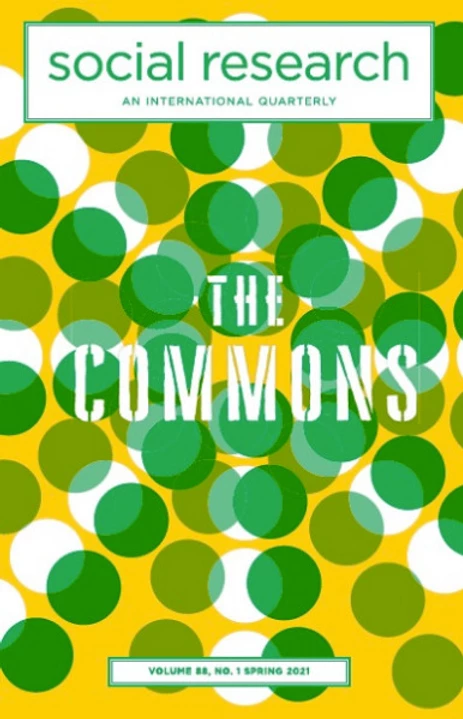
Crowdfunding Commons, If/Then Studio
The share economy has changed our cities with new forms of distributed economies and global flexibility. In housing, it has also removed created vulnerability, turning available units into tourist accommodation. Our project instead imagines the share economy being used as a community fund to build neighborhood resources for long-term housing. By staying in our cabins, you build local funds for long-term housing resources.
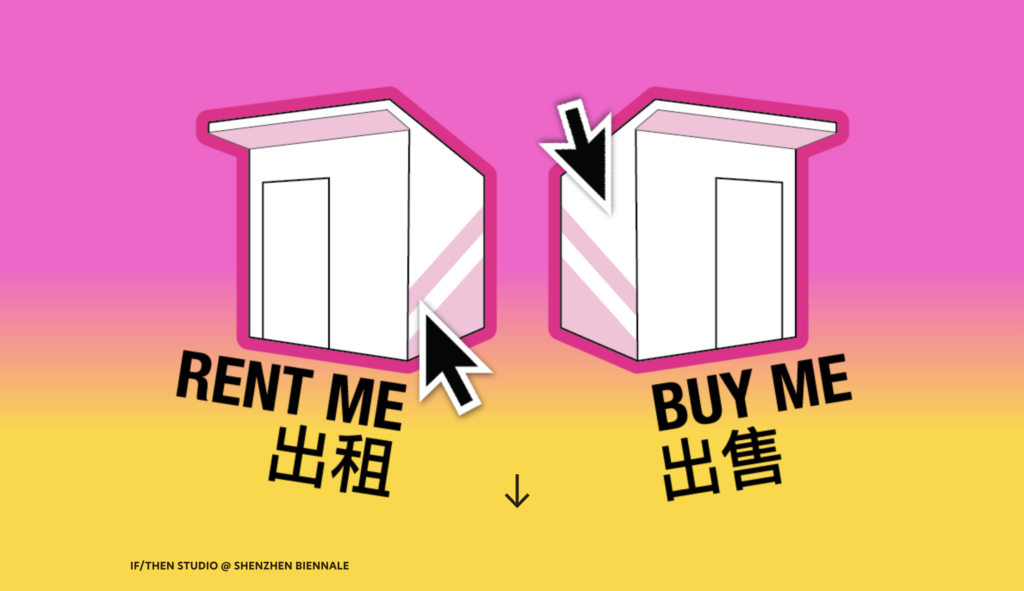
CRITICAL TRANSFORMATIONS: A FORUM ON NEW FUTURES
In Fall 2020, Emily Carr University of Art + Design’s Shumka Center for Creative Entrepreneurship hosted a monthly series of online roundtable conversations titled “Critical Transformations: A Forum on New Futures.” Curated by Ceci Moss, the events invited visionary artists, curators, activists, designers, architects, and arts organizers around the globe to discuss their work in creating groundbreaking new models for the arts sector during unprecedented times. In the face of challenges such as the pandemic, an economic recession, and rising fascism, alongside the opportunities of social justice, creative problem-solving, and bold thinking, these talks were meant to lift up new models and ways of thinking.
During their presentation in the “Institutional Reformatting” session, curator Vanessa Kwan reflected on the representation of the present in artist Angela George’s Tsleil-Waututh weavings (pictured), which express time stretching seven generations forward and back. Kwan asks, “How do we imagine institutions operating differently? How do we imagine what we do engaging with more philosophical aspects of time and place and location and responsibility, which have very real ramifications when taken into our practices in the real world?” Kwan suggests that art spaces act as portals for imagination, where this responsibility towards several generations, both in the past and in the future, can and should be part of the decision-making process. This radical reframing lies at the heart of all of the “Critical Transformations” discussions. The hope is that these convenings will plant seeds for a different orientation towards arts organizing.
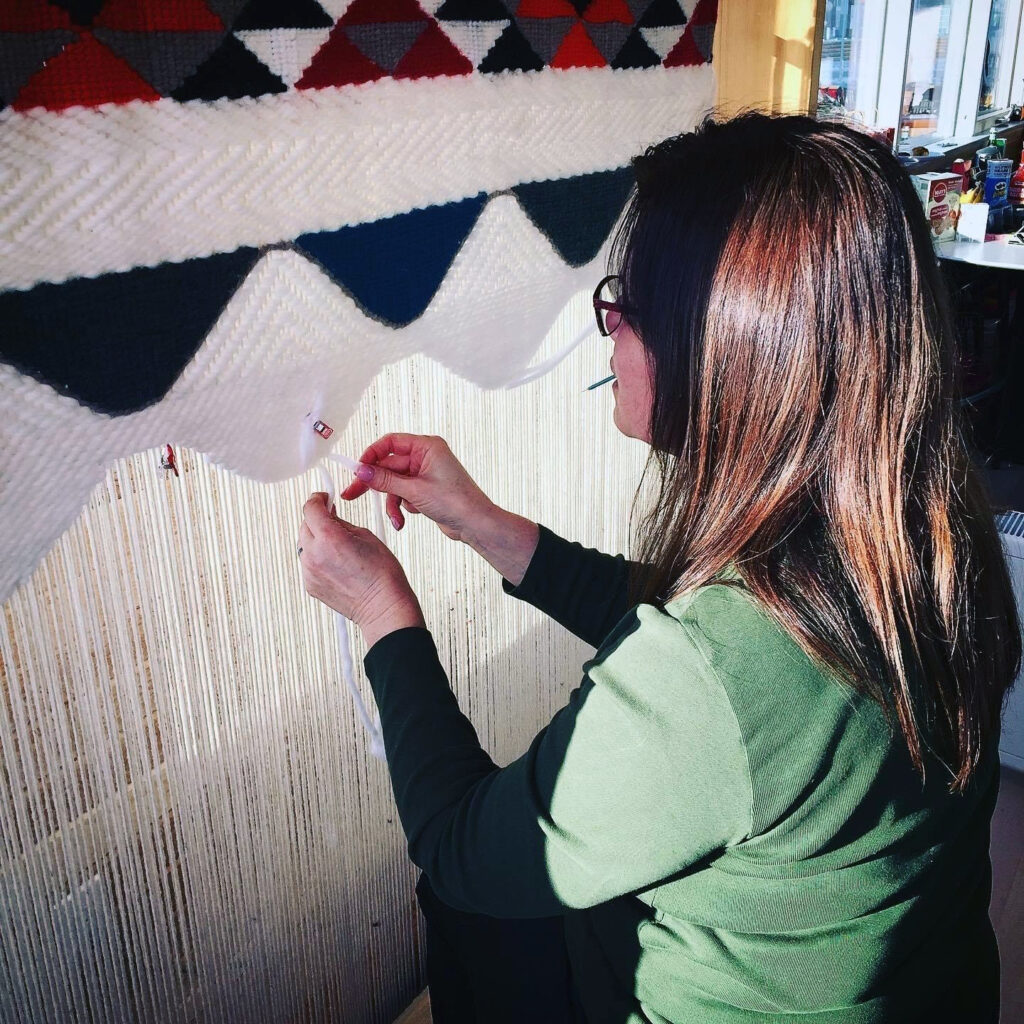
Bernard Harcourt, Critique & Praxis, New York: Columbia University Press, 2020.

Hekler Collective: Infrastructures of Care.
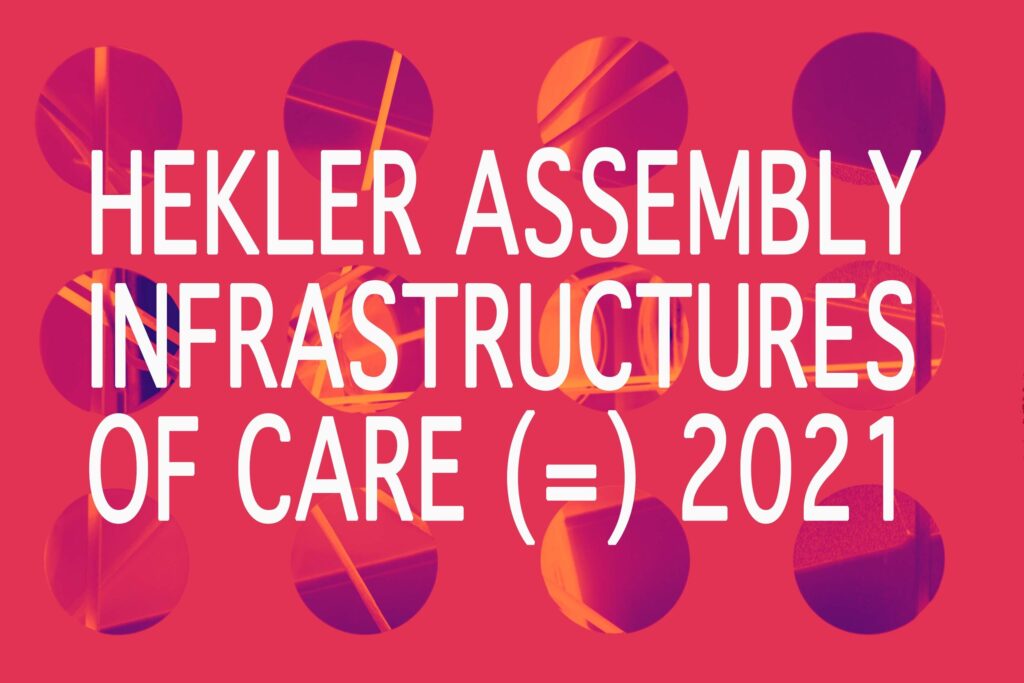
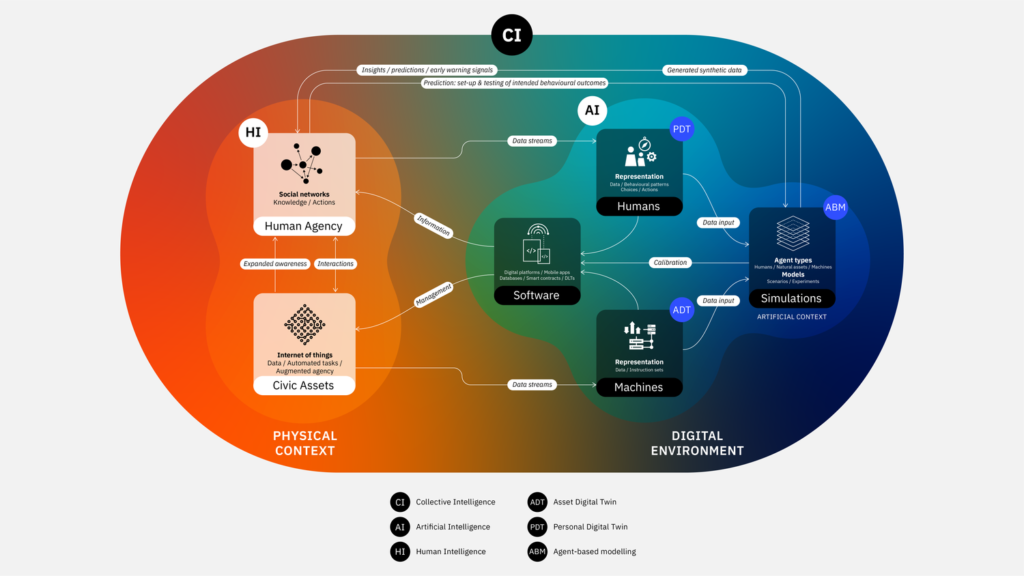

Civic-Indigenous 7.0: Property Rights / Property Wrongs: Micro-Treaties with the Earth

Theorizing Global History, A two-part virtual symposium hosted by the Global Architectural History Teaching Collaborative at MIT, Jan. 16–30, 2021.
Jan 16 Meeting from MIT IDE on Vimeo.
Benjamin Bratton, New World Order: For Planetary Governance, Strelka Institute, Moscow

Planetary Practice curriculum at Bard
Recognizing issues like climate change brings to the fore the trans-scalar relations that directly tie buildings, bodies, cities and ecosystems together. In this context, the planetary lens shifts our view of architecture from the isolated object to the structurally situated and historically entangled design practice—an art form that necessarily cuts across and interrelates multiple scales, disciplines, bodies and actors.
Taming Global Governance Idea Chaos: A “Frontier Frame” for Recent Books
Fulani nomads, ethnic conflict, and climate change in the Sub-Saharan region
YouTube presentation of Yann Meurot’s research on paradigm shift
A People’s Climate Plan for New York City
Our Amplifier proposition regarding freedom of movement for indigenous people as a framework for immigration in both English and Spanish.
The role of banking in the absence of more intentional public policies to produce housing affordability, offers a window into other possibilities.
https://www.dwell.com/article/pandemic-low-mortgage-rate-housing-d2f060e9
Alternative housing policy frameworks.
https://www.aiany.org/membership/oculus-magazine/article/summer-2019/housing-not-included/

Other Voices, Other Worlds in Art in America on efforts to move toward another way of thinking about other species.
On regenerative design.
https://www.metropolismag.com/architecture/landscape/resilience-sustainability/
Review of Agnes Denes exhibition at the Shed. https://www.archpaper.com/2020/02/oracular-visions-of-agnes-denes-on-display-at-the-shed/
Tunde’s discussion of Wole Soyinka was focused on Death and the King’s Horseman. I found this fascinating scholarship on the Yoruba worldview.
https://cap-press.com/pdf/32224.pdf
Achille Mbembe, Necro-Politics https://a.co/3QPmrjW
Vince Carducci, Review of McKenzie Wark’s Capital is Dead: Is this Something Worse?
Power House Productions from Vince’s discussion.
https://www.powerhouseproductions.org
William Rockwell
http://www.williamarchitect.com
Article Rockwell wrote about climate adaptation in the LES of Manhattan.
Claude Boullevraye de Passillé’s Noah’s ark for life on earth project.
http://www.deepspaceecology.com/
Sees is a hybrid physical & digital publishing platform for a new generation of spatial cultures in, of, & for the 21st century.
https://futurearchitectureplatform.org/projects/8b10ec51-84e0-49f5-a7f8-296d7bec5664/
Worldbuilding as a visionary, collaborative practice has come of age. From planetary designs to pop culture, architect Hashim Sarkis, filmmaker Hiyao Miyazaki, and the Black Panther universe provide critical tools, methods, and inspiration to build future worlds.
UN Expert Mechanism on Indigenous Rights
TJ Demos talk on indigenous futurity: https://video.ibm.com/channel/Bkyp5wfycf7
TJ Demos, Beyond the End of the World
https://thi.ucsc.edu/projects/earth-futures-beyond-end-world/
There are Black People in the Future: https://alishabwormsley.com/there-are-black-people-in-the-future
Decolonization is Not a Metaphor
Decolonial Atlas
On the Yoruba imaginary and the god Esu
https://cap-press.com/pdf/32224.pdf
Liam Young, Planet City
https://www.facebook.com/0liamyoung0/videos/10159739586354897/
Radical Austria: Everything is Architecture
Report on Self-Determination under the UN Declaration on the Rights of Indigenous Peoples
The Expert Mechanism would hereby like to call indigenous peoples, States, National Human Rights Institutions and academics to provide contributions to this study, in English, French or Spanish, in WORD format, to expertmechanism@ohchr.org, no later than 1 March 2021. Submissions should focus on the themes contained in the concept note.
https://www.ohchr.org/EN/Issues/IPeoples/EMRIP/Pages/ReportSelfDetermination.aspx
Theoretical References
Bruno Latour, Down to Earth: Politics in the New Climactic Regime
Donna Haraway, Staying with the Trouble: Making Kin in the Chthulucene
Charles Taylor, Reconstructing Democracy: How Citizens Are Building from the Ground Up
Deleuze & Guatarri, Anti-Oedipus: Capitalism and Schizophrenia [reference to deterritorialization]
Jared Diamond, Collapse: How Societies Choose to Fail or Succeed
Eve Chiapello and Luc Boltanski, The New Spirit of Capitalism
Arturo Escobar, Pluriversal Politics.
McKenzie Wark, Capitalism is Dead: Is this Something Worse?
Achille Mbembe, Necro-Politics https://a.co/3QPmrjW
Michel Foucault, The Birth of Biopolitics: Lectures at the Collège de France, 1978–1979
Quantum Darwinism, which may explain our reality, passes tests
https://bigthink.com/surprising-science/quantum-mechanics-which-may-explain-our-reality-passes-tests
Beyond Weird: Why Everything You Thought You Knew about Quantum Physics Is Different
Systems Thinking Resources
Cybernetics 101
https://pangaro.com/definition-cybernetics.html
Mary Catherine Bateson, “Cybernetics in the Future”
How mainstream US childcare habits shape culture over time. Globalization and conflict, how epistemological and ontological errors within and among individuals, can corrupt whole societies, and even destroy the potential for life on earth.
Mitchel Resnick, “Beyond the Centralized Mindset”
https://web.media.mit.edu/~mres/papers/JLS/JLS-1.0.html
Thesis
https://dspace.mit.edu/handle/1721.1/12866
2nd Order Cybernetics
https://en.wikipedia.org/wiki/Second-order_cybernetics
(…including the observer within the observed; failure to do this, to consider wider contexts, leads to epistemological and ontological errors – see #1 above )
Gregory Bateson, “Cybernetic Explanation,” Steps to an Ecology of Mind (PDF) [See Page 287 6.1 Cybernetic Explanation]. Reprinted from the American Behavioral Scientist, Vol. 10, No. 8, April 1967, pp. 29- 32.

[COMPILED BY JAMES ANDREWS]



